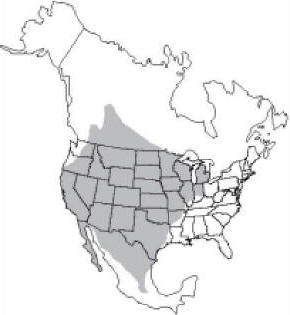As the human population increases and we urbanize more rural areas, we change the character and functionality of the land, air, and water. These changes greatly impact local habitats and native wildlife. As these habitats are impacted, a corresponding shift in wildlife populations impacts both us and them.Nuisance wildlife issues – As we move out into raw land, radical changes occur to sources of food, water, and shelter for endemic wildlife that live in the area. Some animals respond very well to the changes urbanization brings. However, in many cases, it is these animals that seem “fun” and “neat” at first, but then become a realized nuisance.
Category: Predators & Varmints
Trapping Badgers
Badgers can be removed by using live traps and/or foothold traps set like those for coyotes (Coyotes). Snares have been used with mixed success. Badgers often return to old diggings. A good bait for badgers is a dead chicken placed within a recently dug burrow. Fur trapping may reduce badger populations locally, but badger pelts are generally of little value and most badgers are caught incidentally.
Foothold traps (No. 3 or 4) are adequate to hold a badger. Rather than staking the trap to the ground, it is better to attach it to a drag such as a strong limb or similar object that the badger cannot pull down into its burrow. Badgers will often dig in a circle around a stake, sometimes enough to loosen the stake and drag the trap away.
Badger Range and Habitat
The badger is widely distributed in the contiguous United States. Its range extends southward from the Great Lakes states to the Ohio Valley and westward through the Great Plains to the Pacific Coast, though not west of the Cascade mountain range in the Northwest. Badgers are found at elevations of up to 12,000 feet (3,600 m). Continue reading Badger Range and Habitat
Biology and Behavior of Badgers
Badgers are members of the weasel family and have the musky odor characteristic of this family. They are especially adapted for burrowing, with strong front legs equipped with long, well-developed claws. Their digging capability is used to pursue and capture ground-dwelling prey. Typical burrows dug in pursuit of prey are shallow and about 1 foot (30 cm) in diameter. A female badger will dig a deeper burrow (5 to 30 feet long [1.5 to 9 m]) with an enlarged chamber 2 to 3 feet (0.6 to 0.9 m) below the surface in which to give birth. Dens usually have a single, often elliptical entrance, typically marked by a mound of soil in the front.
Badgers have a rather ferocious appearance when confronted, and often make short charges at an intruder. They may hiss, growl, or snarl when fighting or cornered. Their quick movements, loose hide, muscular body, and tendency to retreat quickly into a den provide protection from most predators. Larger predators such as mountain lions, bears, and wolves will kill adult badgers. Coyotes and eagles will take young badgers.
Badgers are active at night, remaining in dens during daylight hours, but are often seen at dawn or dusk. During winter they may remain inactive in their burrows for up to a month, although they are not true hibernators. Male badgers are solitary except during the mating season, and females are solitary except when mating or rearing young. Densities of badgers are reported to be about 1 per square mile (0.4/km 2) although densities as high as 5 to 15 badgers per square mile (1.9 to 5.8/km2) have been reported. An adult male’s home range may be as large as 2.5 square miles (6.5 km2); the home range of adult females is typically about half that size. Badgers may use as little as 10% of their range during the winter.
Badgers breed in summer and early fall, but have delayed implantation, with active gestation beginning around February. Some yearling females may breed, but yearling males do not. As many as 5 young, but usually 2 or 3, are born in early spring. Young nurse for 5 to 6 weeks, and they may remain with the female until midsummer. Most young disperse from their mother’s range and may move up to 32 miles (52 km). Badgers may live up to 14 years in the wild; a badger in a zoo lived to be 15 1/2 years of age.
Trapping Coyotes
There are many effective methods for trapping coyotes, and success can be enhanced by considering several key points. Coyotes learn from past events that were unpleasant or frightening, and they often avoid such events in the future. In spring and summer, most coyotes limit their movements to a small area, but in late summer, fall, and winter they may roam over a larger area.
Coyotes follow regular paths and crossways, and they prefer high hills or knolls from which they can view the terrain. They establish regular scent posts along their paths, and they depend on their ears, nose, and eyes to sense danger. Continue reading Trapping Coyotes
Legal Status of Badgers
In some states, badgers are classified as furbearers and protected by regulated trapping seasons, while in other states they receive no legal protection. Contact your state wildlife agency before conducting lethal control of badgers.
Locating Coyote Dens
Predation can frequently be resolved by locating coyote dens and removing the pups and/or the adults responsible for depredations. Denning may also be warranted as a preventive control strategy if coyote predation has historically and consistently occurred in a particular area during the lambing season. Continue reading Locating Coyote Dens
